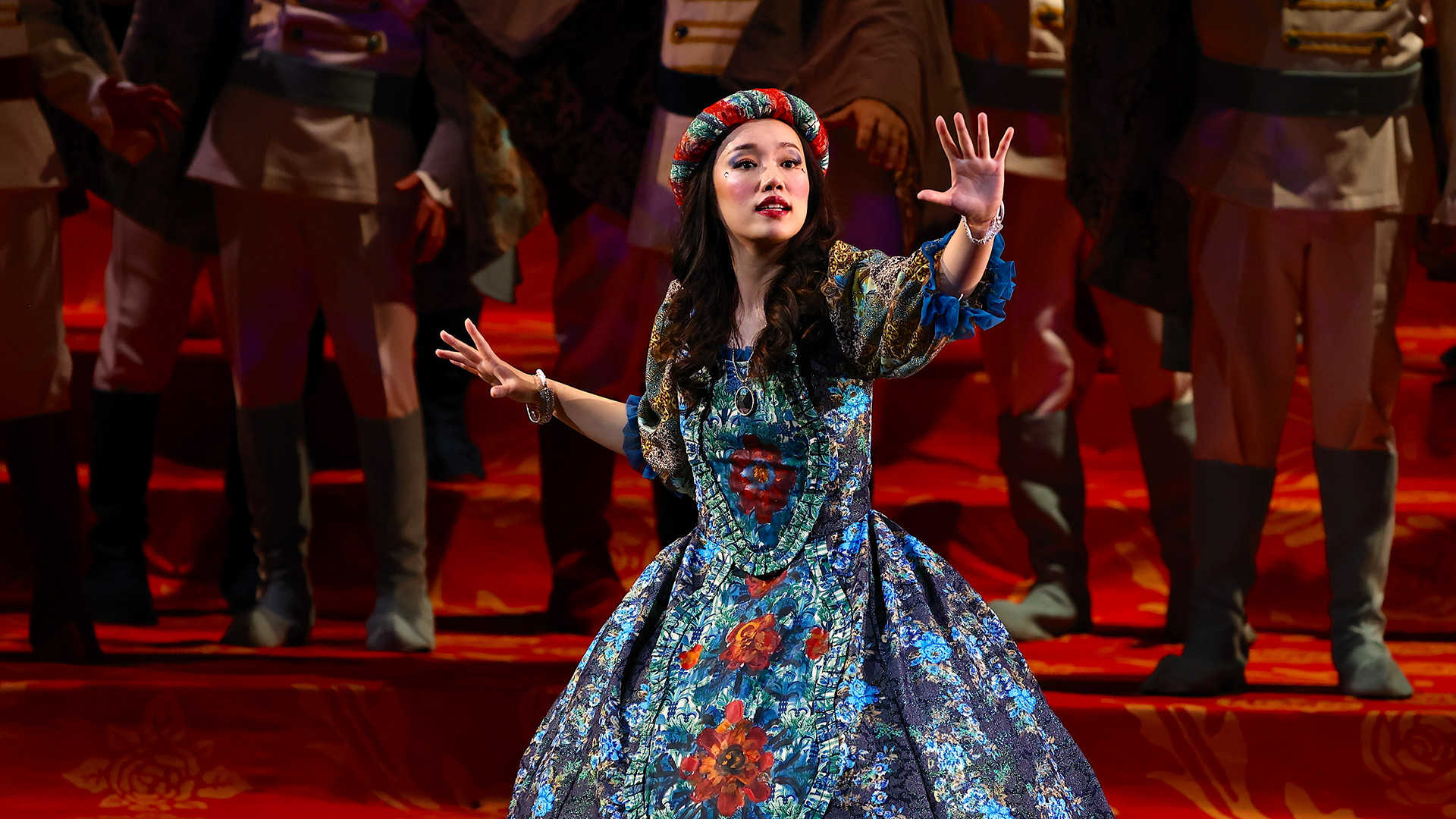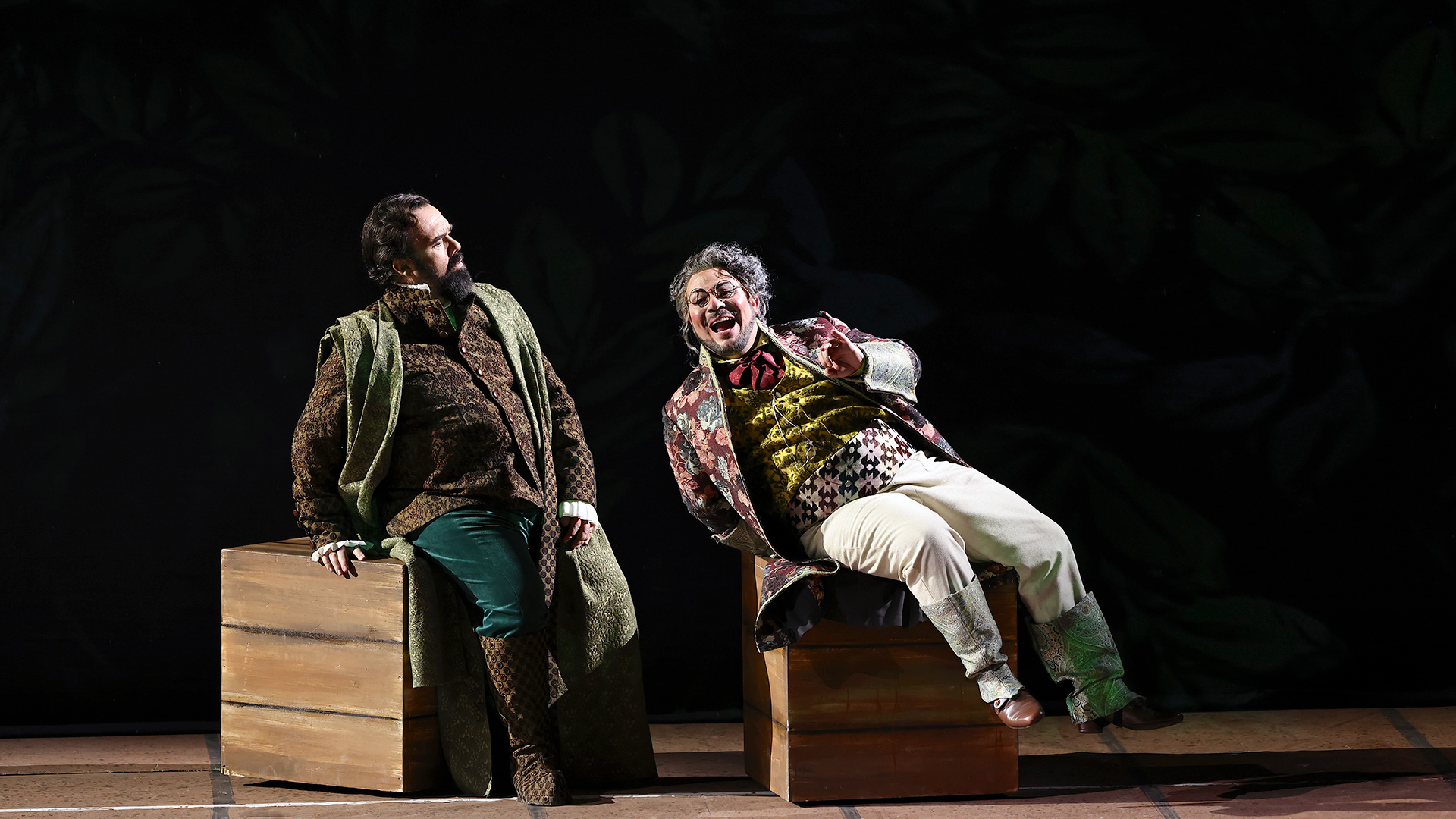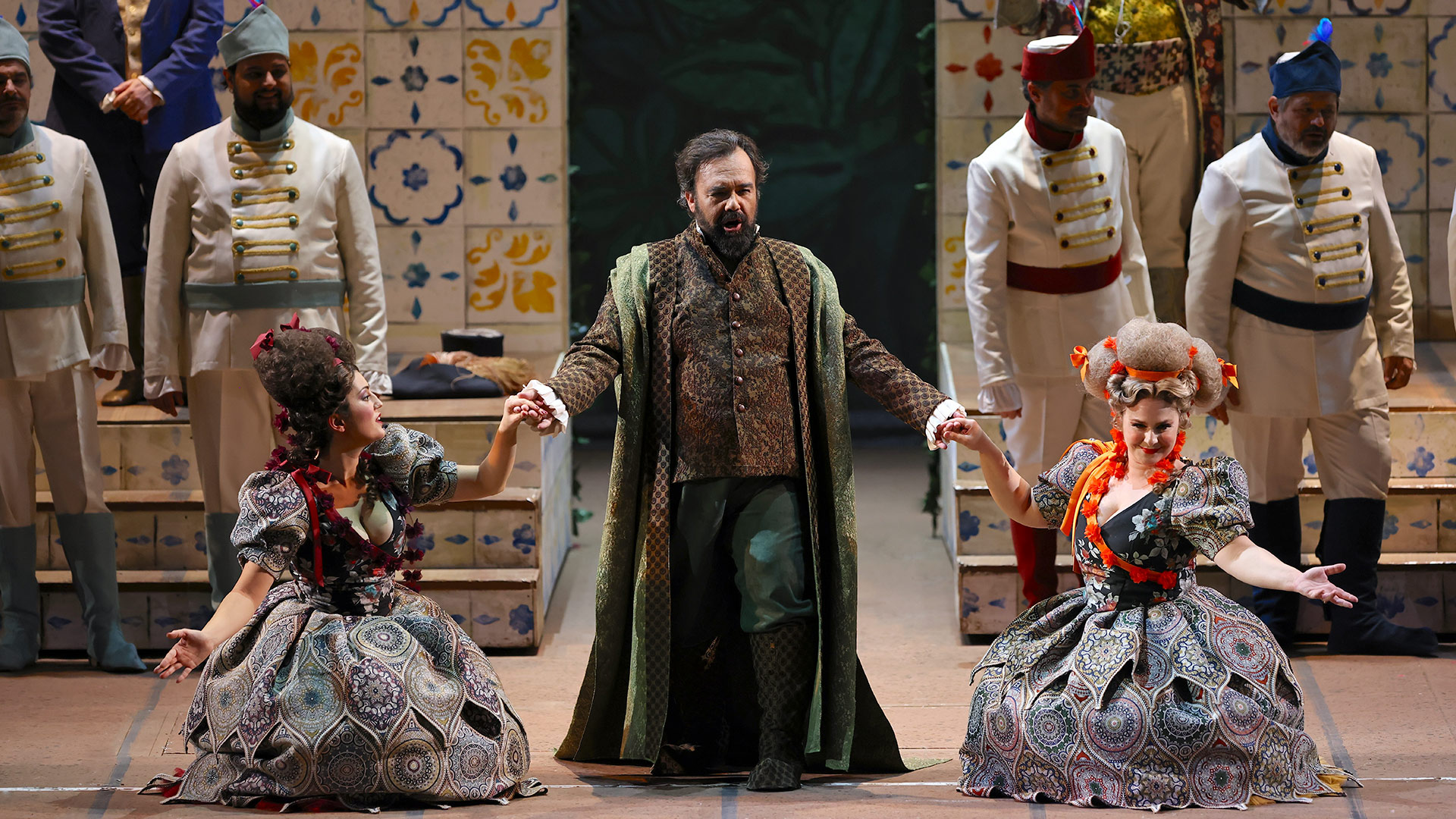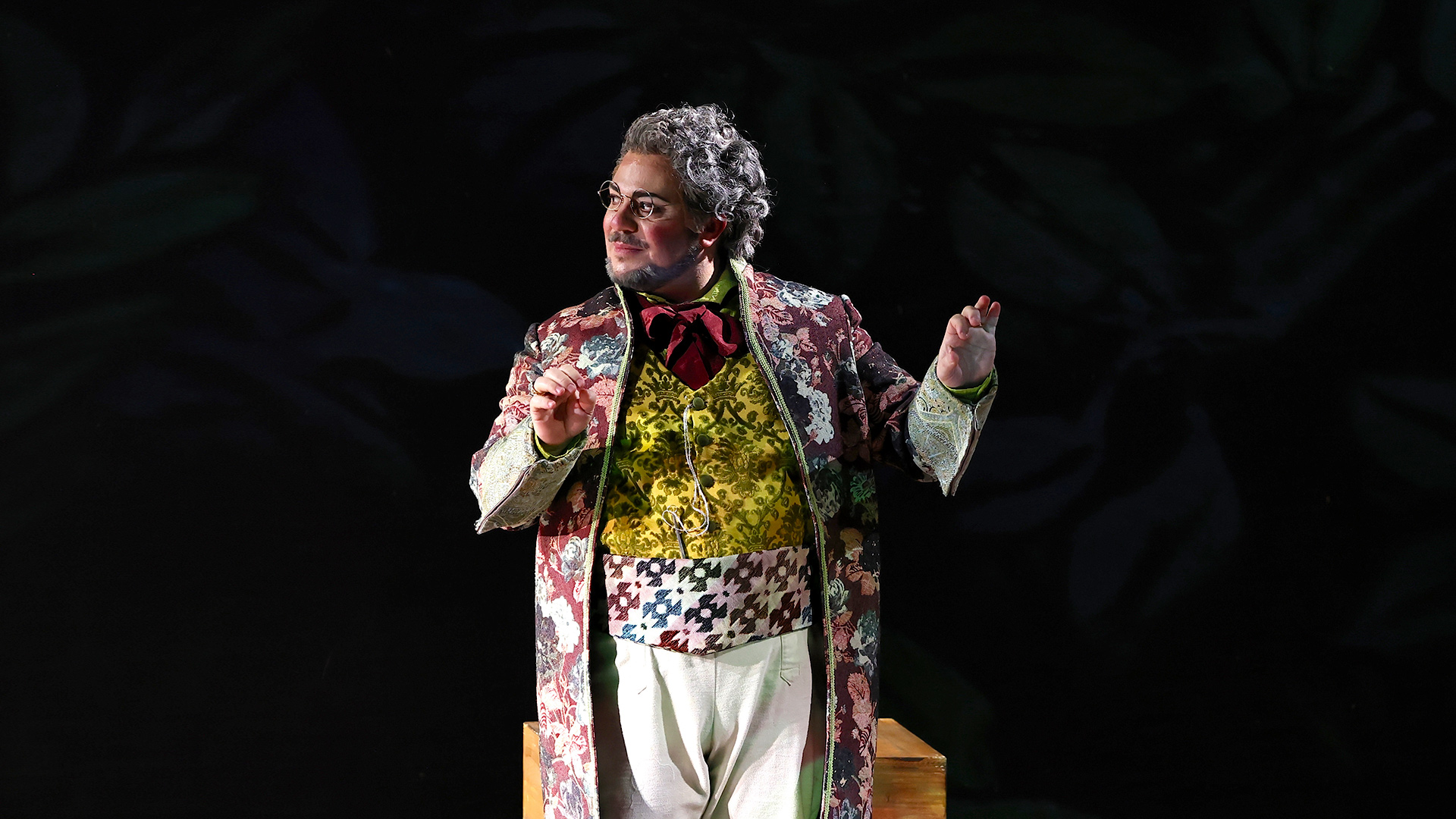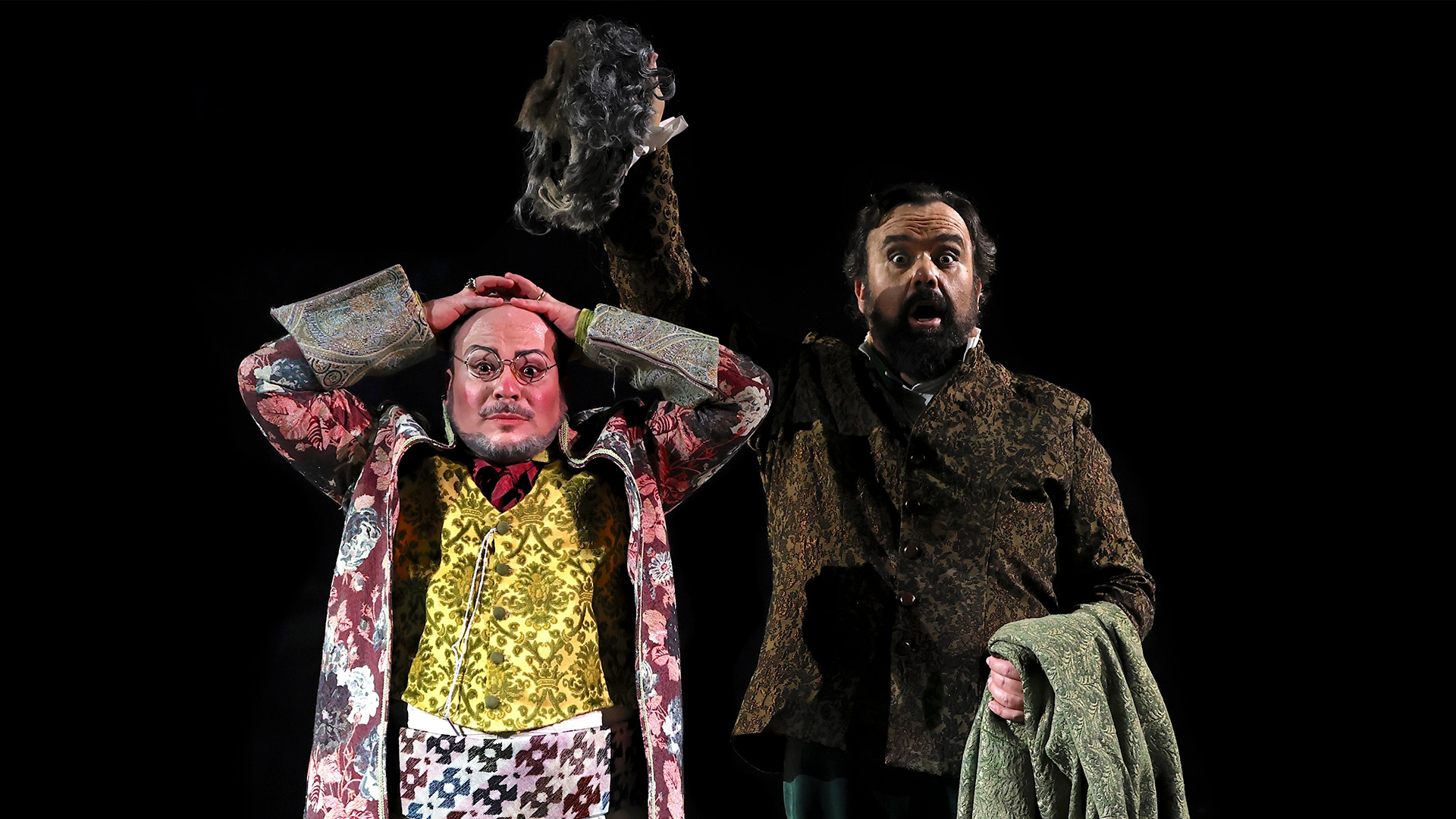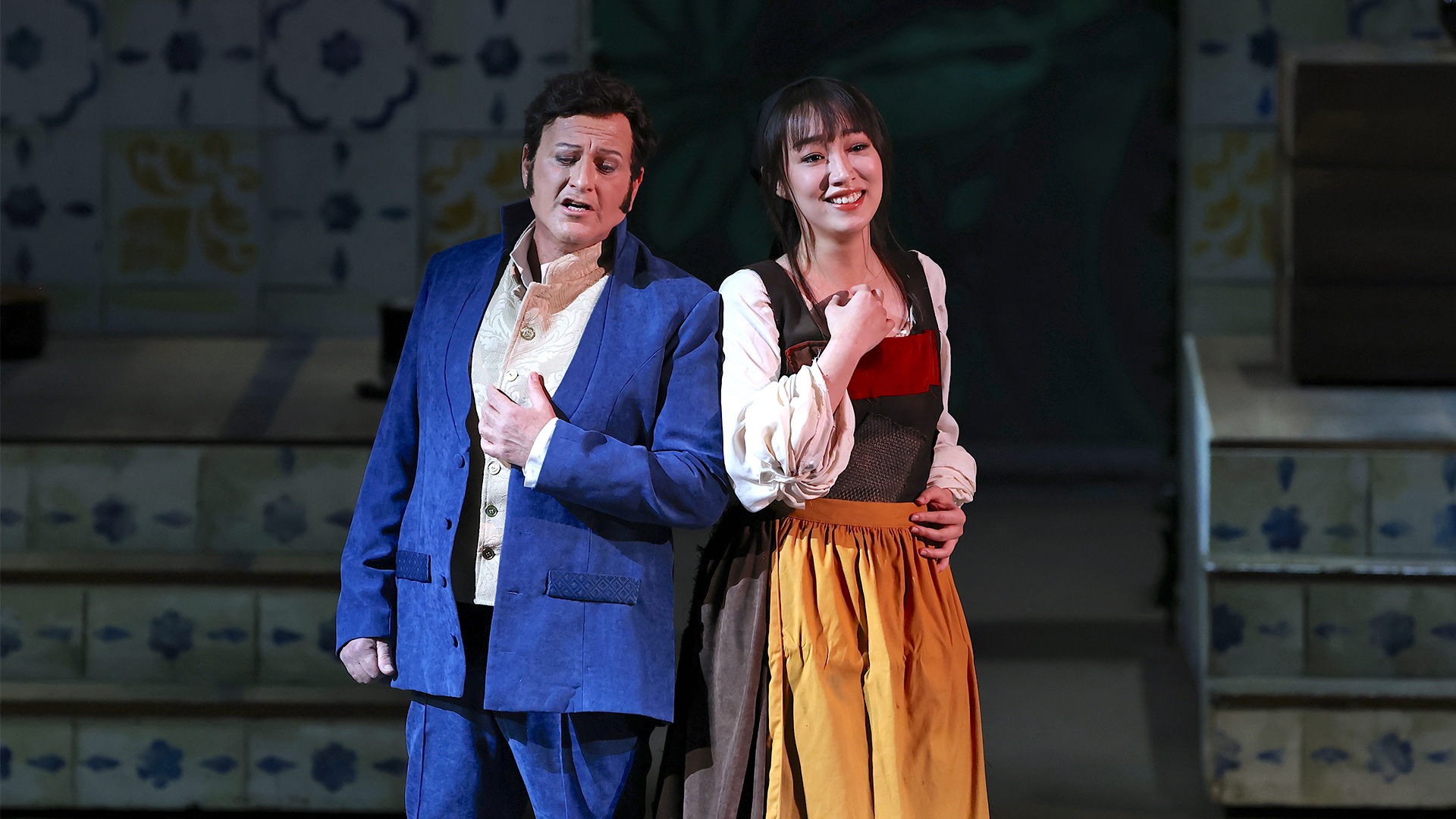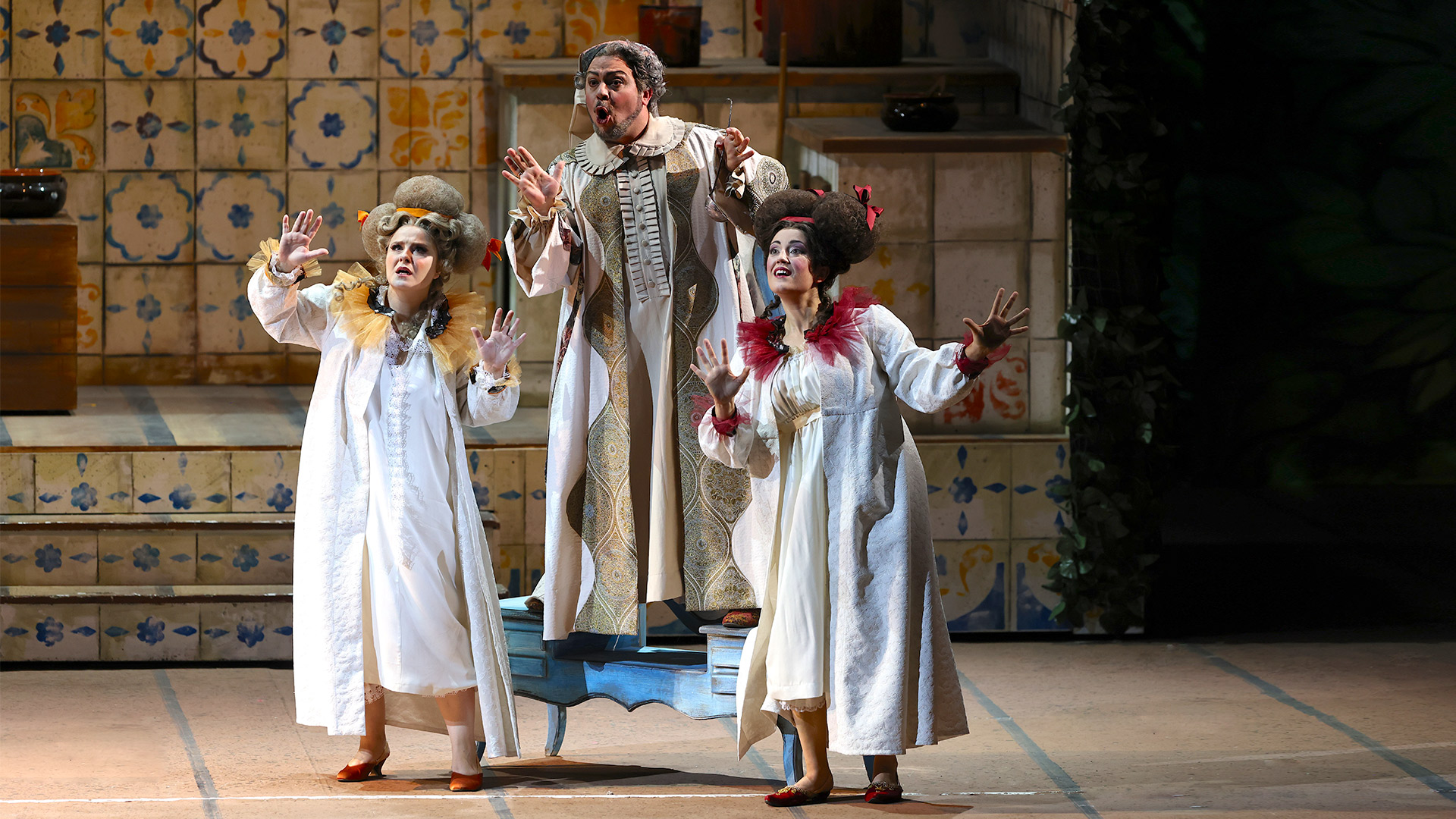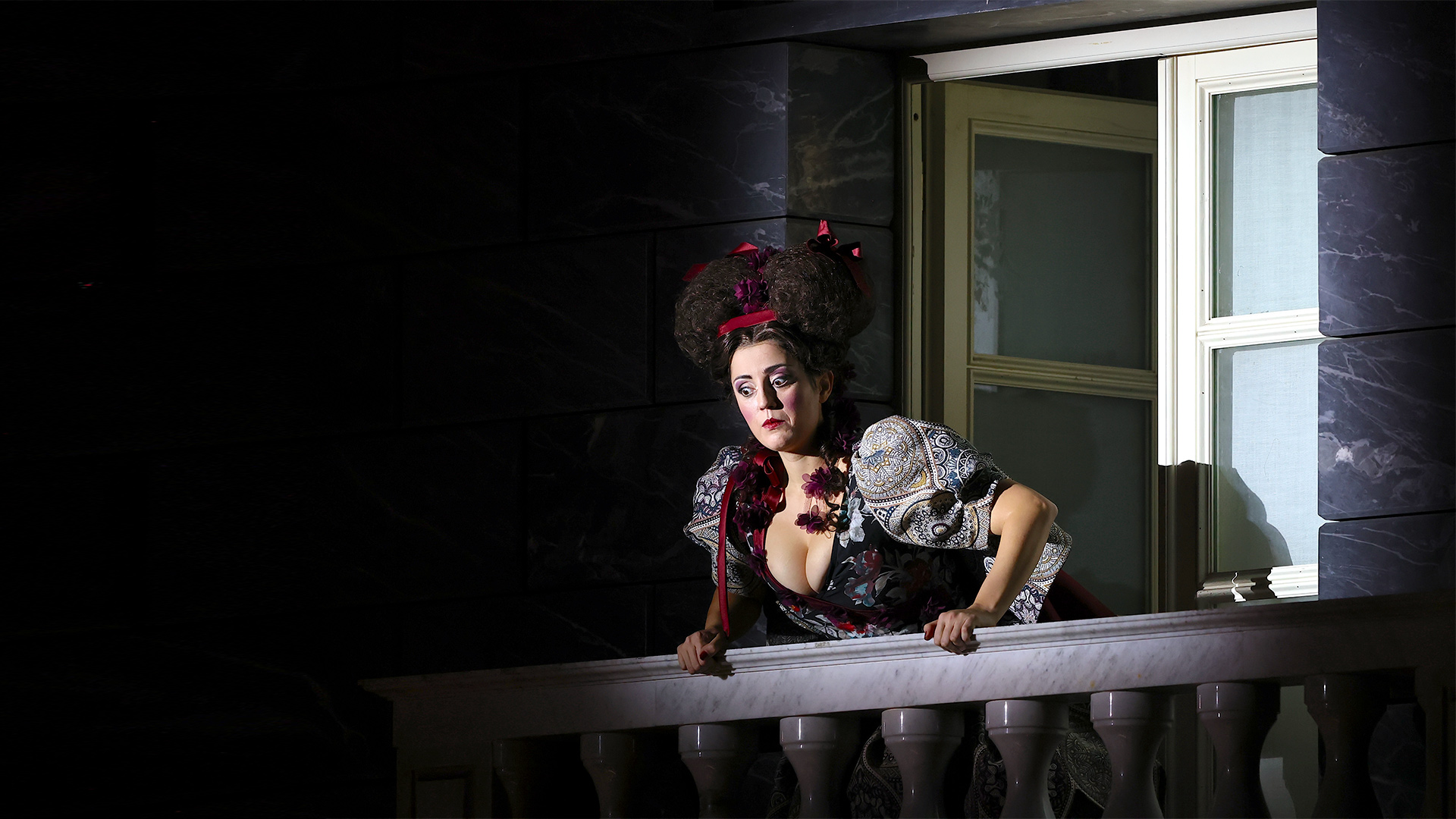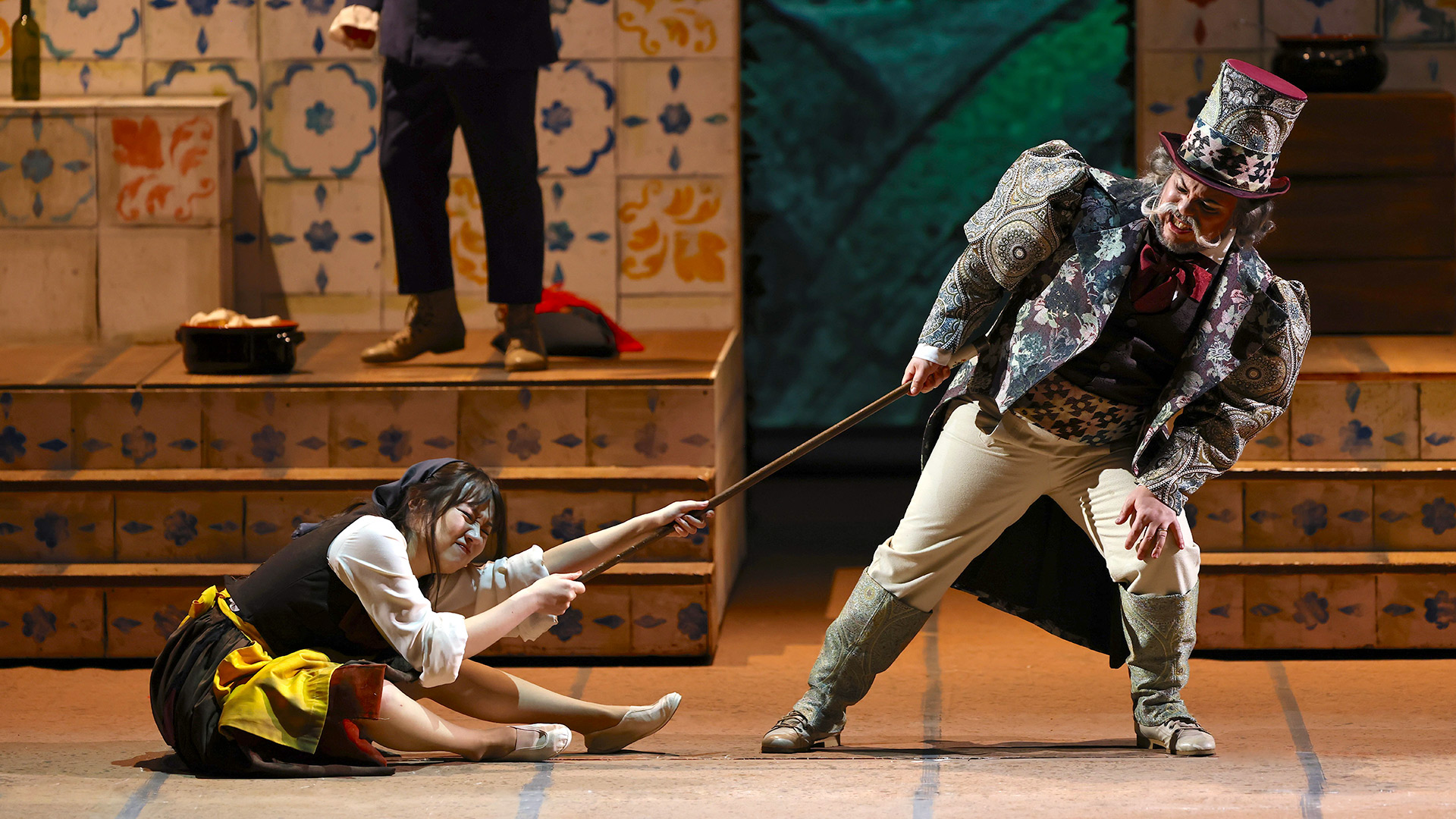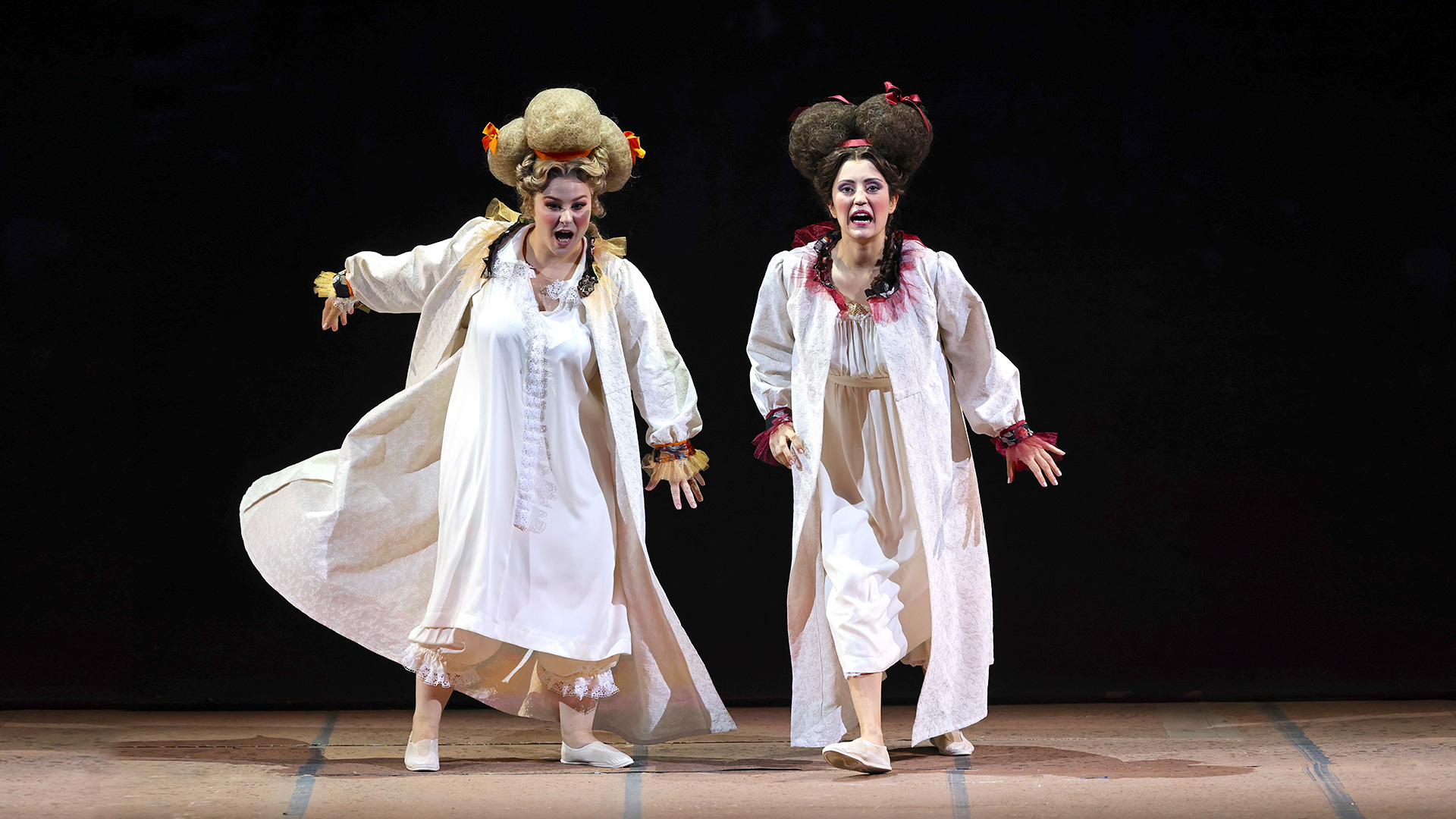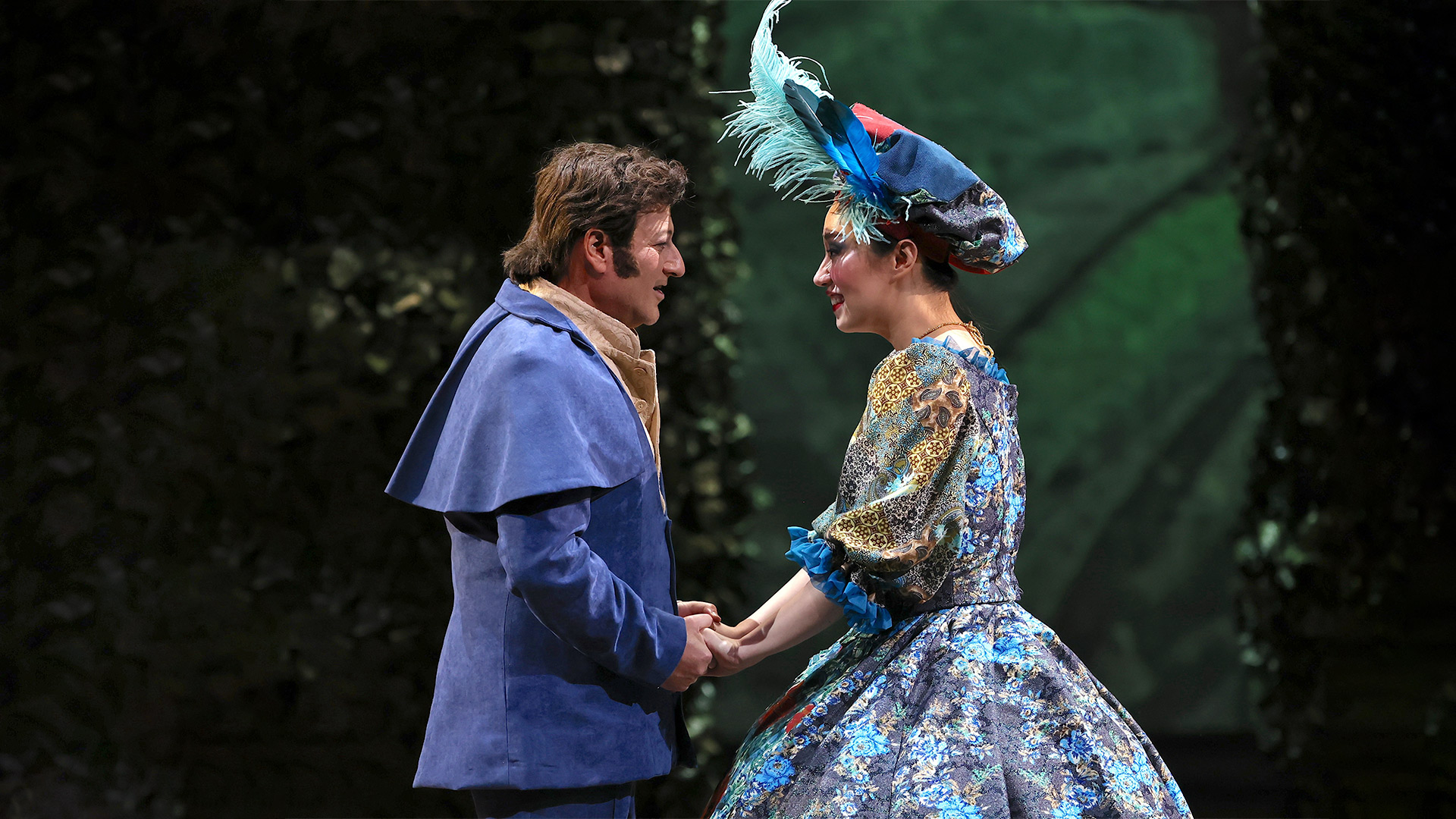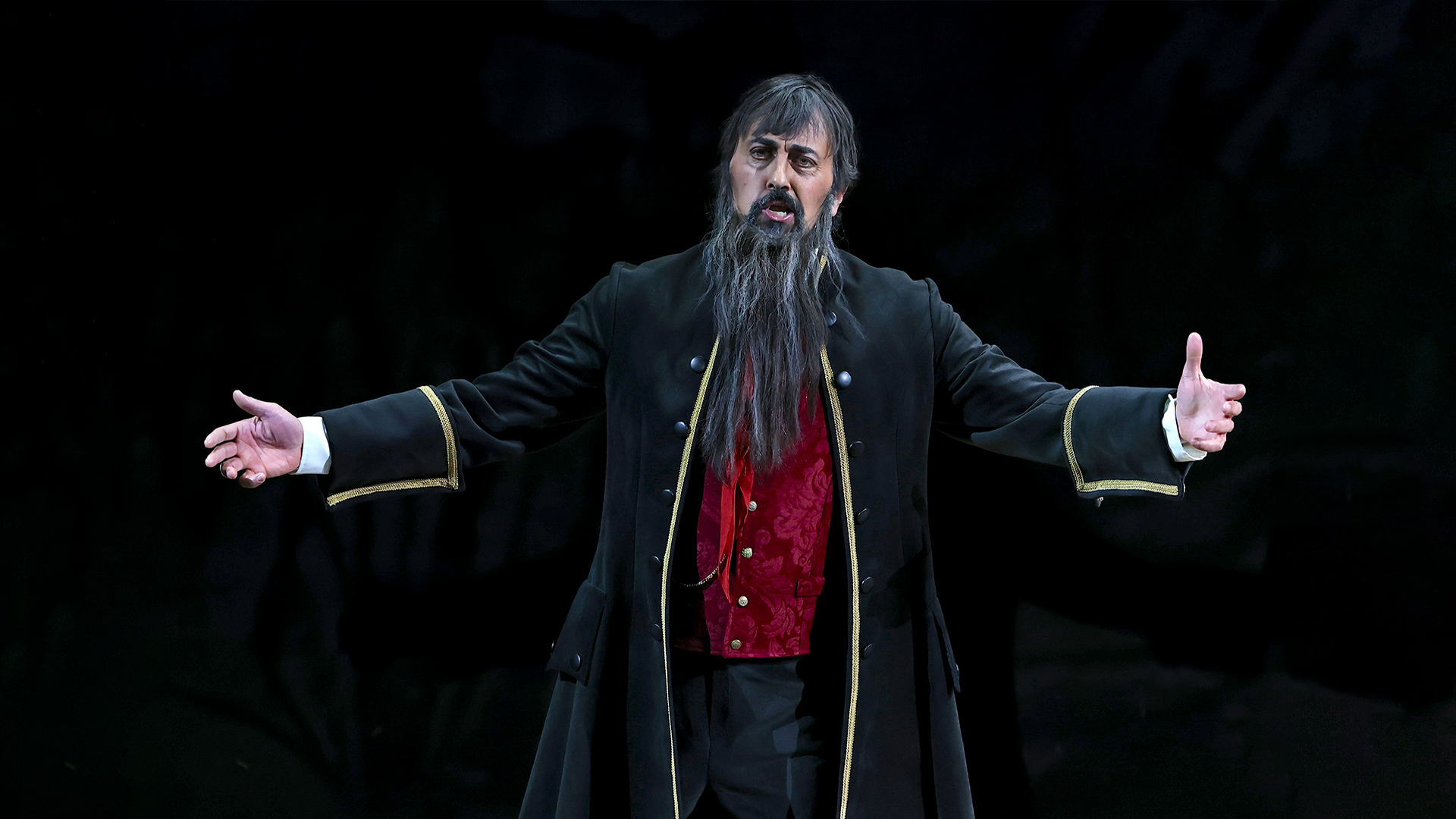Dramma giocoso in two acts
Music by Gioachino Rossini
Libretto by Jacopo Ferretti
_________________________
PLAYBILL
Don Magnifico Marco Filippo Romano /Giovanni Romeo (29, 3)
Cenerentola Hongni Wu/Laura Verrecchia (29, 3)
Dandini Roberto de Candia /Pablo Ruiz (29, 3)
Ramiro Antonino Siragusa/Dave Monaco (29, 3)
Tisbe Carlotta Vichi
Clorinda Giorgia Rotolo
Alidoro Gabriele Sagona/Matteo D’Apolito (29, 3)
Conductor and orchestrator Riccardo Minasi
Director Paolo Gavazzeni and Piero Maranghi
Scenic and costume design inspired by the 1978 staging by Emanuele Luzzati
and the department Direzione degli Allestimenti Scenici
Lighting design Luciano Novelli
Staging by Fondazione Teatro Carlo Felice di Genova
Orchestra, chorus and Technicians of Opera Carlo Felice Genova
Claudio Marino Moretti, Chorusmaster
Master of recitatives Sirio Restani
Staging director Luciano Novelli, Stage music director Paloma Brito, Hall Masters Sirio Restani, Antonella Poli, Maestri di palcoscenico Andrea Gastaldo, Anna Maria Pascarella, other Choir Master Patrizia Priarone, Master of lights Bernardo Pellegrini, Master of supertitles Simone Giusto, Music archive manager Simone Brizio, Stage director Alessandro Pastorino, Deputy Stage Manager Giorgio Agostini, Console Handling Manager Andrea Musenich, Engineer foreman Gianni Cois, deputy foreman electricians Daniele Malcontenti, Tooling foreman Tiziano Baradel, Head of audio/video department Walter Ivaldi, Head of tailoring, shoemaking, make-up and wigs Elena Pirino, Collaboration on costumes Nicoletta Ceccolini, Make-up and hair co-ordinator Raul Ivaldi, footwear Epoca (Milan) andC. T. C. Pedrazzoli , wigs Mario Audello (Turin), surtitlesPrescott Studio.
Thanks are due to Giuseppe Ragazzini for his collaboration in creating the backdrops and video animations.
Photographs by Marcello Orselli from the ante-plane test
Opera in brief
by Ludovica Gelpi
Rossini began composing La Cenerentola in late 1816. Within barely a month, the opera was ready, and was staged in Rome, at the Teatro Valle, on 25 January 1817. Despite some initial reservations, also due to the short preparation time of the first production, La Cenerentola soon became a much appreciated and performed title. Together with librettist Jacopo Ferretti, Rossini searched for a subject that could be performed without incidents with the rigid censorship of the Roman environment. The choice fell on the very popular Cinderella fairy tale, recurring in various forms since ancient Egyptian times, with a sufficiently linear and morally impeccable plot. Particularly suitable for opera transposition, the fairy tale had already been set to music first by Nicolò Isouard, to a libretto by Charles-Guillaume Étienne, then by Stefano Pavesi, to a libretto by Francesco Fiorini.
It is precisely Étienne’s Le Cendrillion and Fiorini’s Agatina ossia la virtù ricompensata that will be the main literary sources that Ferretti will draw on, writing, however, moving towards a more realist dimension, and removing all fantastic elements from the original plot.
Rossini’s music becomes a vehicle for a wide variety of expression, describing and at the same time determining the action.
Some sections – also considering the short time available – were borrowed from earlier compositions, such as the opening symphony, the same one that introduced The gazzetta, of 1816, and excerpts from Barbiere di Siviglia. Luca Agolini was entrusted with the composition of other pieces, such as Alidoro’s aria ‘Vasto teatro è il mondo’, which was later replaced with Rossini’s ‘Là del ciel nell’arcano profondo’, and Clorinda’s aria ‘Sventurata! Mi credea’.
The dramaturgical intent is experimental, La Cenerentola is a dramma giocoso in which several aspects that in the previous century had been the prerogative of opera seria – in particular the greater psychological complexity of the characters – converge with others more easily identifiable in the comic genre. Thus, simple, almost stereotypical characters such as Clorinda and Thisbe coexist with a serious and profound character like Alidoro, and again with Angelina, Ramiro and Don Magnifico, outside any possible clear-cut classification. The result is a work with a subtle, ironic comedy that lends itself to different levels of interpretation, in the direction of a musical theatre that is less circumscribed to a specific genre and richer in nuances and contrasts.
